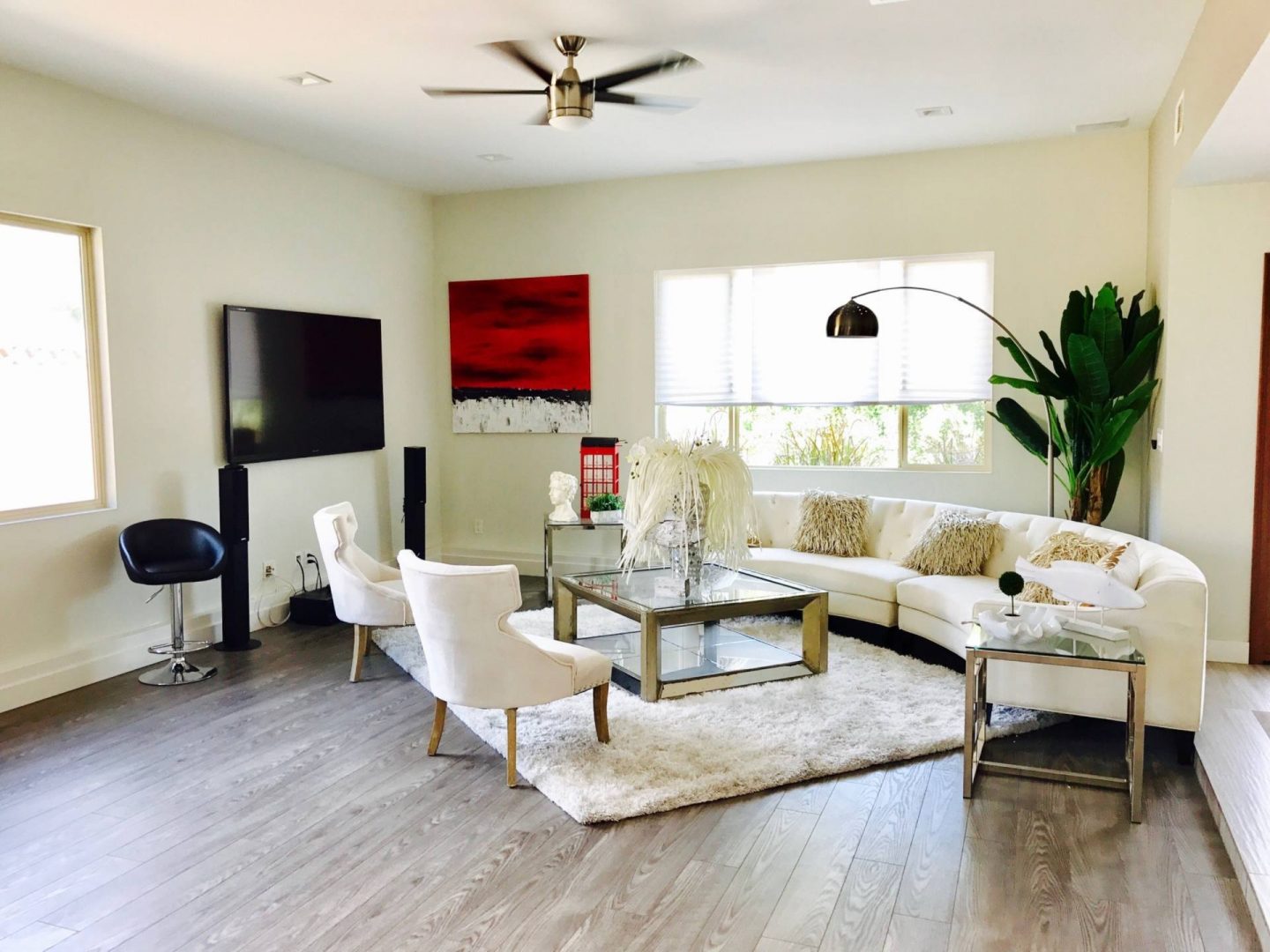*Collaborative post.
Laminate flooring is durable and looks like natural hardwood (but without cost) and comes in a variety of types, including oak, walnut, hickory, and maple. Laminate flooring is also a fantastic do-it-yourself project.
Where Can Laminate Flooring Be Installed?
Because laminate flooring is so sturdy, it’s ideal for high-traffic areas like living rooms and foyers. Today’s laminate floors, on the other hand, aren’t limited to any specific areas. It’s a visually appealing flooring option because of the detail and elegance. It may be used in kitchens and even bathrooms because of the waterproof materials and installation. Basements can also benefit from laminate flooring.
Thickness
Laminate flooring is commonly offered in thicknesses ranging from 7 to 12 millimeters. Keep in mind that some manufacturers mention the thickness of the product, including the core and attached pad, when comparing laminate. Dent resistance is comparable across all laminates. Thicker laminate is better for breaking resistance and noise reduction due to uneven regions in your subfloor.
Width
Laminate planks range in width from less than 5 inches to 7 inches or more.
Finishes
Cherry, chestnut, hickory, maple, oak, pine, and walnut are just a few of the many options available.
Texture
To mimic the look of real hardwood flooring, laminate flooring comes in a variety of textures and finishes.
Embossed or Embossed in Register (EIR): An all-over texture that adds depth and texture in accordance with the décor layer’s design, EIR better resembles the natural look of real hardwood flooring.
Hand Scraped: The laminate is pressed to look like a true handscraped hardwood floor, even if it isn’t.
High Gloss: This high-gloss laminate has a mirror surface and is scratch and ding resistant.
Laminate Flooring Installation Tools and Materials
Laminate flooring is a floating installation, which means it isn’t glued, nailed, or stapled to the subfloor. This makes installation relatively do-it-yourself friendly, but there are a few things to remember.
Underlayment
To make installation easier, certain products come with an acoustical cushion already connected. If not, you’ll need to start by laying down underlayment. Moisture protection, heat insulation, and sound reduction are all provided by underlayment. When placing laminate over concrete subfloors, a moisture barrier underlayment is necessary, as moisture passing through the flooring might cause your floor to expand.
Some laminate floors come with acoustical pads already installed. Although the connected pad can help with installation, it is not a moisture barrier.
Prepare your subfloor for laminate flooring installation by watching our video.
Moulding
Quarter rounds, T-mouldings, thresholds, reducers, and wall bases are all available in matching and harmonizing moulding/millwork pieces.
Tools for Laminate Flooring
To install a laminate floor, you’ll need a draw bar, a tapping block, and spacers. For any waterproof floor to perform as intended in moist environments, you’ll also need silicone sealer and a 3/8-inch foam backer rod.


